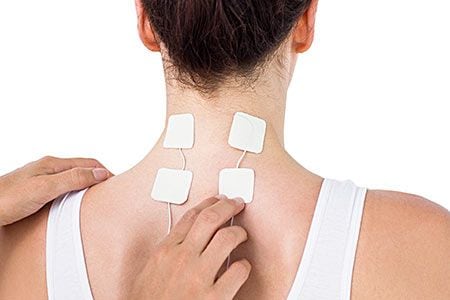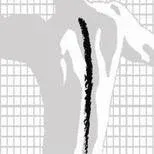
When you have injured or weak muscles that are causing pain or affecting your daily activities, a treatment method called electrical muscle stimulation (EMS) can help reduce discomfort and get you moving again. EMS, also called E-stim, sends small electrical impulses to the injured muscles. The theory is that the current may block pain signals from the muscles to the nerves, preventing them from reaching your brain. This in turn prevents muscle spasms, which would create additional pain. EMS may also stimulate the release of endorphins, the body’s natural “painkillers.” Finally, EMS may help retrain or build muscle tissue.
Many chiropractors are specially trained to apply electrical muscle stimulation in addition to performing adjustments and using other therapies. EMS is usually given soon after an injury, and you may have a series of treatments to alleviate your symptoms and help you heal. Here’s what to know about electrical muscle stimulation:
What to Expect From EMS
In an EMS session, sticky pads are placed on or near the affected area. The pads have electrodes (small wires that can carry an electrical current) attached to them. These are connected to a generator or battery designed for EMS therapy.
At the start the session, the current will be on a very low setting. The current can be set to different intensities, frequencies and intervals based on whether the goal is to relieve pain, reduce swelling or build and retrain muscle tissue. At the optimum intensity, the pulses will feel strong but still comfortable.
An EMS session usually takes about 10 to 15 minutes, though some may last longer. You may feel relief right away, which can last anywhere from several hours to several days. EMS for strengthening or retraining muscles takes longer to have an effect.
When EMS May Be Used
EMS is most often used for back pain, but it can help other areas of your body as well. In chiropractic, EMS is typically used along with other treatments, such as heat, ice and adjustments. In addition to relieving pain and inflammation, EMS can reduce muscle spasms, loosen tight muscles and help you regain range of motion. If you have muscles that have been weakened by illness or injury, it may help prevent further atrophy. Some people claim that EMS can help athletic performance, but there is insufficient evidence to definitively support that claim at this time.
Safety of EMS
There is little risk from EMS. The electric current is very low voltage—you are not in danger of an electric shock of any significance. Rarely, patients may have mild irritation from the adhesive pads after an EMS session, which should go away quickly. If it continues, please notify us on the off chance that there is an allergic reaction to the adhesive, although this would be a very rare situation.
EMS can provide quick relief from muscle pain without drugs, and in the longer term it may help you recover muscle function. In conjunction with other chiropractic therapies and exercise, EMS can help speed recovery and get you back on track.
